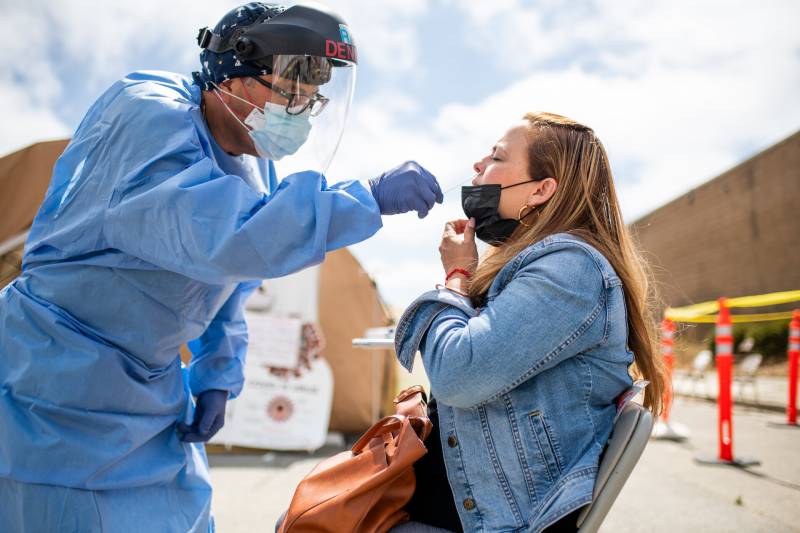Under the deal negotiated and announced Jan. 25 by Gov. Gavin Newsom, Senate President Pro Tem Toni Atkins and Assembly Speaker Anthony Rendon, the new leave program will be retroactive to Jan. 1 and extend through Sept. 30.
In his budget proposal on Jan. 10, Newsom said he wanted the leave reinstated, though details were unclear. With the agreement, the Legislature will act on Newsom’s $1.4 billion emergency budget request for COVID-related programs, well before the regular budget is approved in June.
On Feb. 3, the Senate Budget Committee voted 13-3 to endorse the proposal, incorporated into Assembly Bill 84.
“We want to be sure people aren’t coming to work sick, bringing COVID into the workplace, potentially exposing customers or other people as well,” state Sen. Richard Pan, a Sacramento Democrat, said in support.
On Feb. 7, the full Assembly approved it on a 55-7 vote, and the Senate followed suit by a 30-7 vote.
One of the key negotiating points was offsetting the costs to businesses, especially smaller ones. As with the previous leave, the new leave covers only employers with 26 or more workers, and the state will provide tax credits to companies.
“California’s ability to take early budget action will protect workers and provide real relief to businesses reeling from this latest surge,” the joint announcement said on Jan. 25. “By extending sick leave to frontline workers with COVID and providing support for California businesses, we can help protect the health of our workforce, while also ensuring that businesses and our economy are able to thrive.”
Here are some key points to know about the deal:
Who can use the leave?
Any full-time employee of a company that has 26 or more workers is entitled to 40 hours of paid leave due to COVID. That doesn’t cover getting the vaccine or recovering from side effects; in that instance, a worker gets a maximum 24 hours.
But to get additional paid leave, as much as 40 hours more, workers would have to show proof that they or a family member had tested positive. This provision is apparently to address concerns from the California Chamber of Commerce about possible fraud by employees. Employers must pay for and provide the test. If a worker refuses to take a test or show a positive test result, no additional sick leave will be granted.
Under current health guidelines, anyone who tests positive should quarantine for five days, regardless of vaccination status. While the number of daily cases has been declining, below 60,000, that’s still more than during the delta variant surge last year.
The leave will be retroactive to any time off starting Jan. 1. Employees will be compensated at their regular pay rates, a maximum of $511 a day, or $5,110 total.
But making only employees at larger businesses eligible leaves out three in 10 workers, the budget center says.
What do businesses get?
Last year, they were reimbursed for the supplemental paid leave with a federal tax credit, which is no longer available.
This time, businesses will have to absorb the costs, but they will be helped by restoring tax credits for research and development and net operating losses, through tax relief for recipients of federal relief grants for restaurants and shuttered venues and additional funding for more small business grants.
Cal Chamber said the proposed bill also ensures that the rate of pay matches existing sick leave and makes reporting wage statements simpler.
Chamber President and CEO Jennifer Barrera said any new sick leave mandate should be limited in duration and have “reasonable parameters,” and shouldn’t overly burden businesses.
She said on Feb. 2 that the latest proposal is a “balanced approach to protect both workers and our economy.”
“Based on concerns and input from Cal Chamber, the Governor’s office considerably improved their original proposal to make reinstatement of the leave far more affordable and manageable,” Barrera said in a statement. “While we understand this additional leave will be shouldered by many employers, the proposal is more limited in scope and duration than what was originally discussed. We appreciate productive discussions with the Governor’s office, Legislature, and advocates for labor.”

